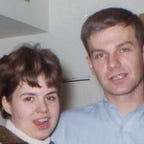Baseball Personalities (Part 1)
In 1949, Jimmy Powers, the pioneering sports columnist and editor for the New York Daily News in the 1930s, 40s and 50s, wrote “Baseball Personalities,” a book about the most colorful ball players of all time.
What first caught my attention, however, was not who was in the book but who wasn’t. Stars like Lou Gehrig, Joe DiMaggio, Hank Greenberg and Jimmy Fox, to name a few, failed to make the cut.
“Those players,” Powers said, “were worth more to their teams than a dozen show-offs and blow-hards. . . .Yet something was missing — something indefinable.”
That “something” was color. “I know that in some players it is a witty tongue,” Powers said. “In others it is an inflated ego and a big mouth. Some players are colorful because they are hated. Others, because they throw tantrums and are prima donnas.”
What was Gehrig’s problem? And DiMaggio’s? Why didn’t they make the book? Gehrig, as Powers explained, was “nice to kids, a swell person.” He probably liked dogs and ironed his own clothes, too.
DiMaggio, in turn, was “shy and retiring,” qualities that don’t exactly lend themselves to screaming headlines. In other words, even though both men were great, GREAT players, they were kind of boring, lacking that “indefinable” quality known as color.
Had this book been written today, I doubt future Hall of Famer Derek Jeter would have made the list either. As one famous sports writer said, “I never interviewed Jeter and never wanted to because he’s never said anything interesting in his whole life.” The same could be said for his former manager Joe Girardi who was recently shown the door by the Yankees. Catching one of Joe’s regular postgame interviews was like taking an overdose of sleeping pills. Reporters, desperate for an interesting quote, were practically comatose by the time Girardi finished. (And now, heaven forbid, he’s been hired as an analyst by the MLB Network!)
Choosing who should be included in “Baseball Personalities” was not easy. “To define color in a ball player,” said Powers, “or in any athlete for that matter, is tougher than deciding the All-Star, All-Great baseball team of all-time.”
It can be dangerous, too. In the book’s introduction, the author describes what happened when he was in Cleveland to cover the 1948 World Series between the Indians and Boston Braves.
He was in the lobby of a hotel and swapping stories with a local scribe when he happened to mention that he hadn’t included Lou Boudreau, Cleveland’s talented player-manager in the book.
“No sooner were the words out of my mouth,” writes Powers, “than I was rudely yanked off the sofa by this hulking stranger with sensitive ears, pinned against the wall and threatened with assorted varieties of assault and battery. He swore that I had abused him, his ancestors and the entire state of Ohio.
“Now, wait a minute mister!” I yelled. “A man’s got a right to his his opinion. All I did was leave out Lou Bou — “
“Don’t bother askin’ any questions,” my assailant told the small crowd which had gathered around us. “Let’s just run him out of town on a rail.”
“But fellows! I’ve included Ol’ Satch and Bobby Feller,” I shouted.
“In that case,” some kind soul suggested, “break only one of his arms.”
“Had I been slaughtered in cold blood,” said Powers, “no witness would have testified against my assailant. No judge would have convicted him. I was saved that day only because someone called out that the bus to Municipal Stadium was ready to leave.”
Powers confessed that when he started this book, “I had no real conception of my danger but now it is too late.” His book runs 320 pages; the writing is bright and breezy as he profiles more than 50 of the most colorful ball players who ever lived. Among them: Al Schacht, Honus Wagner, Lefty Gomez, Casey Stengel, Dizzy Dean, Leo Durocher and, of course, Babe Ruth. We’ll explain what made them “colorful” in our next edition of The Reading Season.
As for Powers, if someone ever writes a book about the most colorful sports columnists, he will definitely be in it. He was the first to make hit and error signs regular fixtures in ball parks. He crusaded for the introduction of plastic batting helmets and was the first sports columnist to urge that blacks be allowed to play in the major leagues. He was also one of sports first cross-over media figures, following the lead of fellow News columnist Ed Sullivan by announcing NBC’s Gillette Friday Night Fights.
But Powers was no stranger to controversy. In 1938, he became involved in a ringside brawl after chastising boxing promoter Mike Jacobs as “Snow Mike and the Seven Dwarfs.” He also was sometimes accused of putting his byline on columns other people had written. In 1940, he was forced to issue a public apology for suggesting the Yankees had been hit by “a mass polio epidemic,” charging that Lou Gehrig’s illness had infected teammates.
No question about it. Jimmy Powers was colorful. He was 92 when he passed away in 1995.
